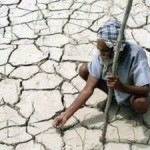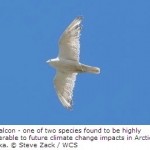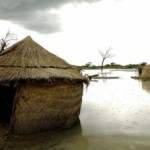In order to study different cycles of advance and retreat of the Chorabari glacier, various loops of lateral and terminal moraines have been studied in its inactive zone (i.e., the zone which is no longer in contact with the glacier). A series of four well-defined lateral (Figure 3) and terminal moraine loops (L1 to L4) are noticed at a height of 3160, 3320, 3440 and 3640 m asl respectively, which have been used as the basis for reconstructing the glacier history in defining the sequence of glacier episodes before its complete deglaciation from the inactive zone.

The moving ice body, which formed the stage II landforms, did not have the energy to destroy the existing larger landforms of stage I deposited in the enhanced activity during Little Ice Age, but it could only modify its lateral and ground moraines. This suggests that the glacier energy associated with the formation of smaller superimposed landforms of later stage is of lower order and is insufficient to significantly alter the pre-existing landforms. In the similar manner, stages III and IV performed action in the respective area. These loops suggest that after their development, no major movement/advance activity of the glacier took place in the region. Otherwise, more loops would have been found in this zone. The four stages of advance and retreat have been dated with the help of lichenometric study.
The moraines were dated by lichenometric studies following the method described in the literature[1–8]. It depends on the assumption that if colonization delay (time taken by the lichen to grow on a surface after its exposure to the atmosphere) and growth rate of lichens are known in a particular area, then a minimum date can be obtained by measuring maximum diameter of the largest lichen at the site. This method is useful in regions of glacial environment which are mostly above and beyond the tree line, where lichens grow slowly and have great longevity. In such conditions, it is possible to date deposits up to thousand years; but in most of the cases, this method is useful for dating deposits just up to 500 years.
The most common lichen growing on the slope boulders is Rhizocarpon geographicum. It belongs to the yellow–green section Rhizocarpon most frequently used in lichenometry. The longest axes of all the lichens of this species growing on the upper faces of selected boulders were measured with a flexible tape and digital caliper, with measurements estimated to the nearest 1 mm. About 2000 lichens in the region were measured on different moraines and their frequency distribution was plotted (Figure 4) to display relative age structure of the population. Size increment of 4 mm was established, since an increment that is too small produces multiple low and irregular frequencies, while information is lost if increments are too large.

Seven prominent lichens on different moraines were well marked in the field for future reference. These lichens were measured again during the first week of November 2004–07 and a growth of 1 mm was found from their calibration curves (Figure 5). Thus, a growth rate of 1 mm per year was established in the area.














